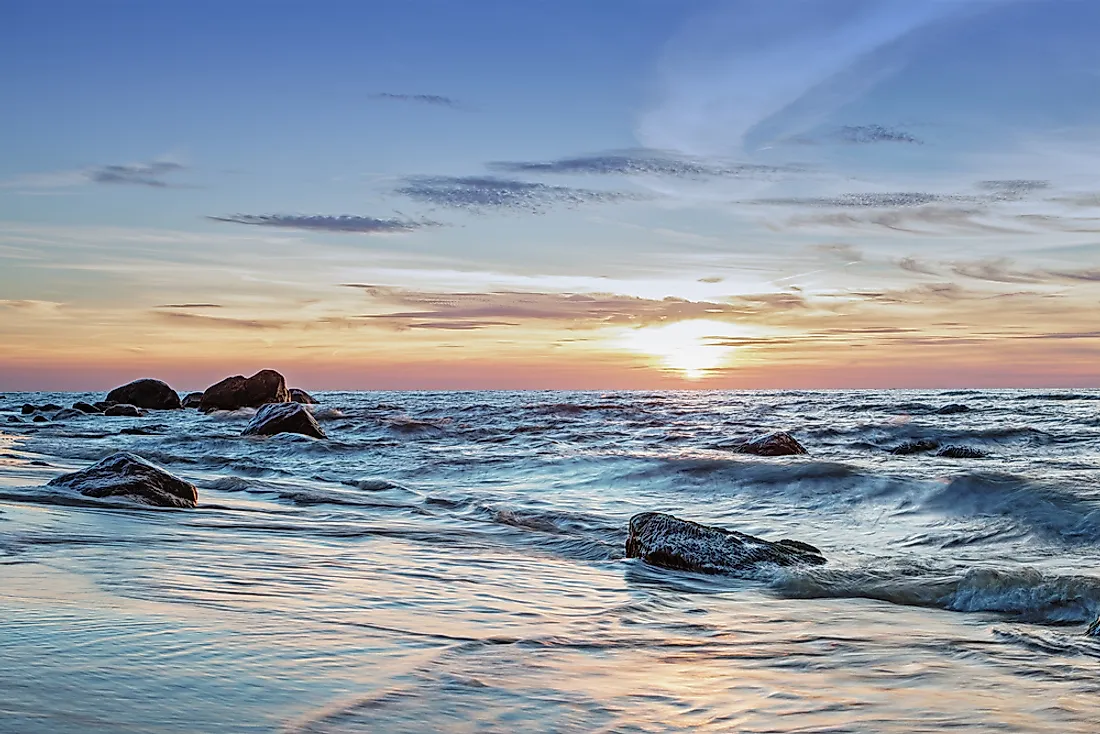Inland Seas Of The World

What Is an Inland Sea?
One characteristic that defines all inland seas is their shallow depths, with none reaching more than 2,000 feet in depth. The two major inland seas in the world today are North America’s Hudson Bay and the Baltic Sea in Europe. Some sources also define the South China Sea and the Persian Gulf as inland seas. The world has seen inland seas come and go in its history. The Western Interior Seaway is an example of a prehistoric inland sea.
The Hudson Bay
The Hudson Bay has a surface area of 0.47 million square miles, making it the largest inland sea in the world. The sea’s drainage area is even larger, covering an area of 1.49 million square miles. The maximum length of the inland sea is 851 miles and is 652 miles at its widest point. The depth of the relatively shallow sea averages at 330 feet, and is 890 feet at its deepest point, which is still shallow and characteristic to epicontinental seas. The inland sea has the longest shoreline of any bay in North America and is only surpassed globally by the Bay of Bengal. The islands in the inland sea are categorized into two groups; the Ottawa and the Belcher Islands. Many of the islands are found in the eastern coast of the bay. The Hudson Strait is the connection that links the inland sea to the Atlantic Ocean, while the Foxe Basin links the inland sea to the Arctic Ocean. The main countries of the inland sea are the United States and Canada.
The Baltic Sea
The Baltic Sea is a large inland sea, covering an area of 0.146 million square miles. With a shoreline exceeding 5,000 miles in length, the sea has a maximum length of 995 miles and stretches about 120 miles at its widest point. While the sea has an average depth of 180 feet, it is 1,506 feet deep in its deepest point (which is still shallow relative to other seas). The sea is composed of brackish water and is the largest brackish sea in the world. Nine rivers drain into the Baltic Sea; Vistula, Oder, Narva, Neman, Daugava, Torne alv, Kemijoki, Neva and Lule alv. The catchment area of the Baltic Sea covers an area of 0.633 million square miles, more than four times the size of the sea itself. Poland, Denmark, Germany, Russia, Estonia, Sweden, Latvia, Finland, and Lithuania are the nine European countries that border the sea.
Prehistoric Inland Sea
The Western Interior Seaway was a prehistoric inland sea that existed in the Cretaceous period. The inland sea was found in modern-day North America, and ran across the continent, connecting the Arctic Sea to the Gulf of Mexico. North America was at the time made up of two land masses; Appalachia and Laramidia. At its peak, the inland sea had a maximum width of 620 miles, stretching from the Appalachians all the way to the Rockies, while its maximum length stretched about 2,000 miles. The deepest point of the Western Interior Seaway ranged between 2,600 feet and 3,000 feet, making the inland sea quite shallow in sea standards.











